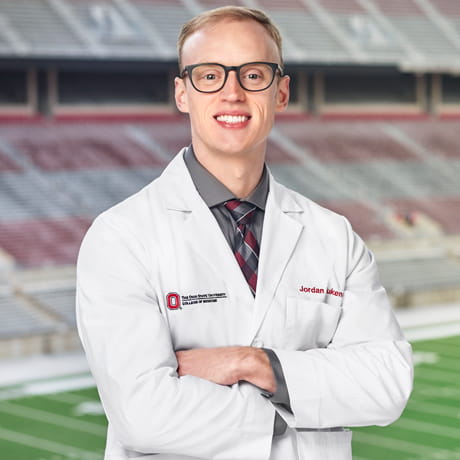
Jordan Lukens
Medical student Jordan shares the aspects of Ohio State’s curriculum and culture that made him even more excited to attend medical school here.

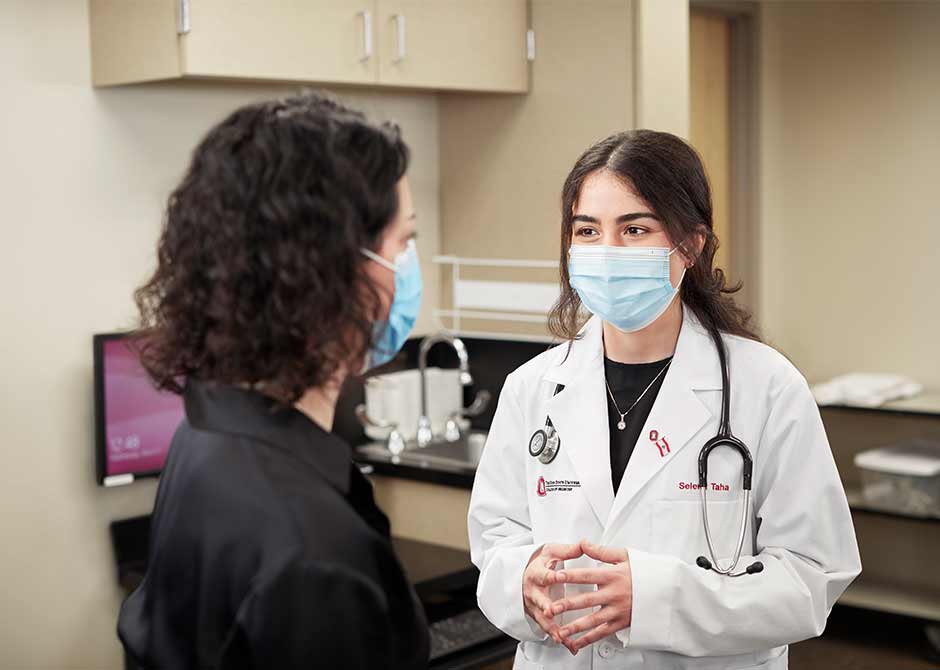 As my time as a medical student in the three-year primary care track program at The Ohio State University College of Medicine ends, I feel prepared and ready to take on residency. When I graduate in a few weeks, I know my interactions with patients helped me grow personally and professionally. They’re the reason I’m in this field, and their care is the most important thing to me.
As my time as a medical student in the three-year primary care track program at The Ohio State University College of Medicine ends, I feel prepared and ready to take on residency. When I graduate in a few weeks, I know my interactions with patients helped me grow personally and professionally. They’re the reason I’m in this field, and their care is the most important thing to me.
My first rotation as an M3 was in Ob/Gyn. In my first cesarean section, I spent time speaking with the patient and easing her anxiety. The next day on post-partum rounds, she personally thanked me and said it made her birthing experience much less nerve-racking. I’ll always remember that moment.
I knew I wanted to be a physician from the age of 6. I remember going to the library with my dad and opening a pop-up book that revealed the inner workings of veins and arteries throughout the body. I instantly wanted to understand what was happening in the illustration. My dad told me that doctors specialized in understanding what goes on in the body and how to fix things when they go wrong. I was hooked.
Early in my first year and a half in the program, I began learning about various body system disorders and seeing patients with these disorders in clinical practice. The chance to see patients so early in my medical training reinforced the foundational concepts we learned in lecture, while integrating procedure-based training, history taking and physician examination.
During all three years, I was paired with a faculty mentor preceptor, which allowed me to build a strong mentor/mentee relationship but also experience patient continuity as a medical student.
Throughout my childhood, my mom endured chronic health issues. I saw the dedication and care she received from health care professionals, especially doctors. This taught me that doctors provide more than just a diagnosis — they also provide comfort.
Doctors aren’t just people who give a diagnosis or medication. They stand by you and provide emotional and mental support. These experiences solidified my commitment to pursue medicine so I could offer that level of care to patients in need.
During my undergraduate studies, I volunteered at a free health care clinic in my hometown. It was really eye-opening to see the disparities in access to health care in my own community. It made me realize that a person’s socioeconomic status, ethnicity, religion or culture shouldn’t hinder access to good health care. I also saw firsthand how physicians would take the time to deeply connect with patients, and how these connections could lead to better health outcomes.
Learning to think critically guides my skills and my ability to speak up and advocate for patients within the very complex medical system. It empowers me to make a difference in a patient’s life as I did when I connected with the patient at her child’s delivery, making her birthing experience less nerve-racking.
Medical students completing the three-year primary care track program have the opportunity to continue into Ohio State’s Family and Community Medicine residency program. This relationship allows us to work closely with family medicine physicians and residents all three years. I decided to apply to another residency program because my husband is a resident at a different institution. Ohio State and the primary care track program were very supportive and provided guidance and advice during this process.
I definitely made the right decision coming to Ohio State for the primary care track program. I’m part of a supportive and encouraging environment and have made really great friends. The college offered me a family medicine experience no other school could have provided me, and I have the opportunity to become a family doctor even earlier.
I’m just so happy to be a Buckeye.
At Ohio State, you will receive a highly respected education from world-renowned faculty who are recognized across the nation. Since 2002, Ohio State medical students have received Step 1 and Step 2 pass rates equal to or above the national average. And with an average match rate of more than 95% each year, our graduates match in some of the most prestigious residency programs in the nation. Residency director surveys show that our graduates are some of the best prepared in their programs.
Ohio State is home to some of the most welcoming, supportive and caring people who are all committed to helping you reach your full potential. With several community service opportunities and more than 50 student organizations, you will be able to pursue your passions and discover new ones.
Major components of Ohio residency for in-state tuition include:
If you choose not to establish Ohio residency, in an effort to lower student loan debt, the College of Medicine has reduced the out-of-state surcharge for third- and fourth-year medical students.
Combine a lower cost of living with a thriving health care landscape creates a perfect environment for medical students or any healthcare professional. Columbus boasts four world-renowned, award-winning healthcare systems, including The Ohio State University Wexner Medical Center and Nationwide Children's Hospital.

Medical student Jordan shares the aspects of Ohio State’s curriculum and culture that made him even more excited to attend medical school here.
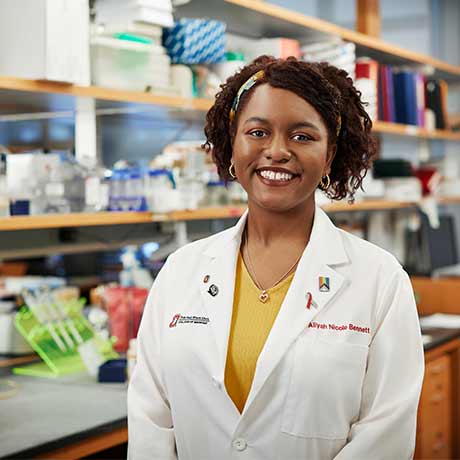
Through Ohio State’s MD/PhD program, Aliyah combines her passions for medicine and research as she develops new treatments for chronic pain.
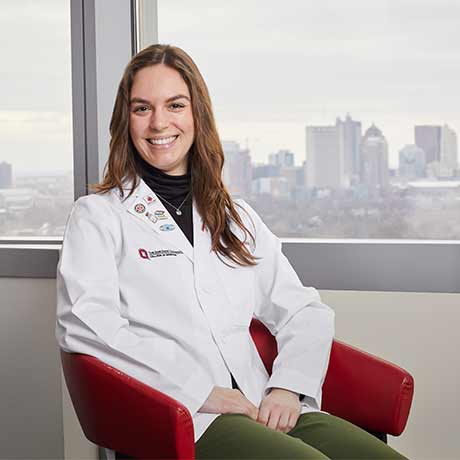
As an out-of-state student, Amanda found her home away from home and is establishing in-state residency after her first year.
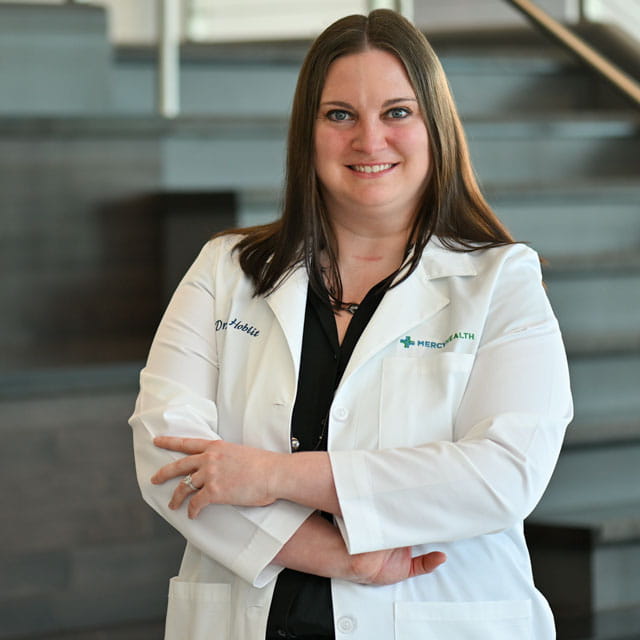
Providing accessible care in rural communities drives Dr. Hoblit’s passion for practicing family and community medicine. Learn more about Ohio State’s Community Medicine MD Track.

Millennium Manna, an international student in the Ohio State College of Medicine's traditional 4-year MD program, explains why she choose Ohio State for medical school.